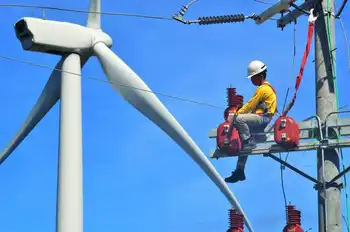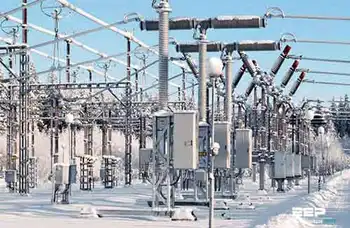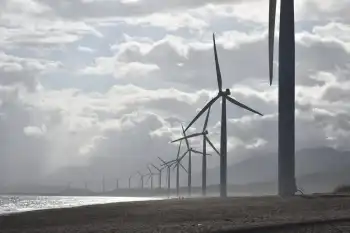New York City sends canvassers to see extent of blackouts
NEW YORK, NEW YORK - Saying that Consolidated Edison is not able to reliably estimate the number of customers affected by blackouts, New York City officials said that they were now using door-to-door visits and even police helicopters to get better estimates of how many people lose electricity during power failures.
Joseph F. Bruno, the commissioner of the cityÂ’s Office of Emergency Management, announced the new effort yesterday during a City Council hearing on the cityÂ’s response to the blackout in July in western Queens, which affected about 100,000 people.
The blackout began on July 17, but it took Con Edison until July 21 to acknowledge that 25,000 customers were without power, 10 times more than its earlier estimate. The term customers includes households as well as apartment and office buildings.
“We have never seen Con Ed be off by a factor of 10, as we’ve seen here,” Mr. Bruno said. Con Edison has said that it severely undercounted the number of affected customers because it was relying on phone calls to its hotline.
Mr. Bruno also disclosed that Con Edison came precariously close to shutting off power on July 19 to the entire Long Island City network, which serves 100,000 customers — at least 300,000 residents — in western Queens.
Con Edison has said that there were two periods when 10 of the 22 high-voltage feeder cables that supply power to the network were down: from 8:38 to 8:53 p.m. on July 18 and from 11:33 a.m. to 1:10 p.m. on July 19. Typically, customers begin to lose power if more than two feeders fail.
Early in the afternoon on July 19, Mr. Bruno said, Con Edison warned him that it was considering shutting down the network to pre-empt a breakdown and further damage to equipment.
Mr. Bruno said his “greatest fear” was the prospect of “people standing in subway tunnels,” stranded by a power interruption. “I said, ‘Don’t take anything down unless you give us as much notice as possible,’ ” he recalled.
Although Con Edison has said that it considered a shutdown on the evening of July 18, the urgency of the situation on July 19 was not publicly known until recently.
Con Edison’s warning set off a flurry of activity. “This was clearly a very large concern, and O.E.M. immediately began to plan for the possibility of a major blackout during rush hour,” Mr. Bruno said.
Mr. Bruno said the Metropolitan Transportation Authority told him that it would need at least 30 to 60 minutes to safely move subway trains into stations so that passengers would not be stuck in tunnels. Bracing for a shutdown, Mr. Bruno said, he asked the authority to have additional buses ready and arranged for school buses to take Queens residents home from Manhattan.
About 5 p.m. on July 19, after several feeders were brought back into service, Con Edison said “that the network would hold and that they would not need to take the network down themselves,” Mr. Bruno said.
He said that Con Edison’s performance during the blackout was inadequate. “I’ve heard a lot about their system,” he said. “It’s not very impressive. They are the entity required to provide electric service to our city. They have the authority to do that. I’m very unimpressed with the way they’ve done that.”
Now, whenever there is a report of a blackout with “significant impact” or affecting at least 1,000 customers, the city will send a Power Outage Response Team — comprising representatives of the Police and Fire Departments, the mayor’s Community Assistance Unit and the Office of Emergency Management — to canvass the area. The teams will go door-to-door and fly overhead if needed, and estimate the number of people affected.
“With this firsthand information, we can better understand the scope and impact of the outage and deploy all necessary assets to the scene,” Mr. Bruno said.
Since the Queens blackout, the teams have been used seven times, he said.
James T. Gallagher, director of the Office of Electricity and Environment at the State Public Service Commission, which is investigating the blackout, said that Con Edison had doubled its annual spending on transmission and distribution equipment since 2001 to more than $1 billion and was spending an additional $100 million a year to rebuild secondary power lines.
“Unfortunately, these improvements did not help to avoid the outages in Queens, and our investigation needs to find out why,” he said.
Mr. Gallagher said the commission would “monitor closely” the utility’s “operation throughout the remainder of the summer and the long-term repairs to the damaged network.”
Related News

Potent greenhouse gas declines in the US, confirming success of control efforts
WASHINGTON - A new NOAA analysis shows U.S. emissions of the super-potent greenhouse gas sulfur hexafluoride (SF6) have declined between 2007-2018, likely due to successful mitigation efforts by the Environmental Protection Agency (EPA) and the electric power industry.
At the same time, significant disparities that existed previously between NOAA’s estimates, which are based on atmospheric measurements, and EPA’s estimates, which are based on a combination of reported emissions and industrial activity, have narrowed following the establishment of the EPA's Greenhouse Gas Reporting Program. The findings, published in the journal Atmospheric Chemistry and Physics, also suggest how additional emissions reductions might be…




